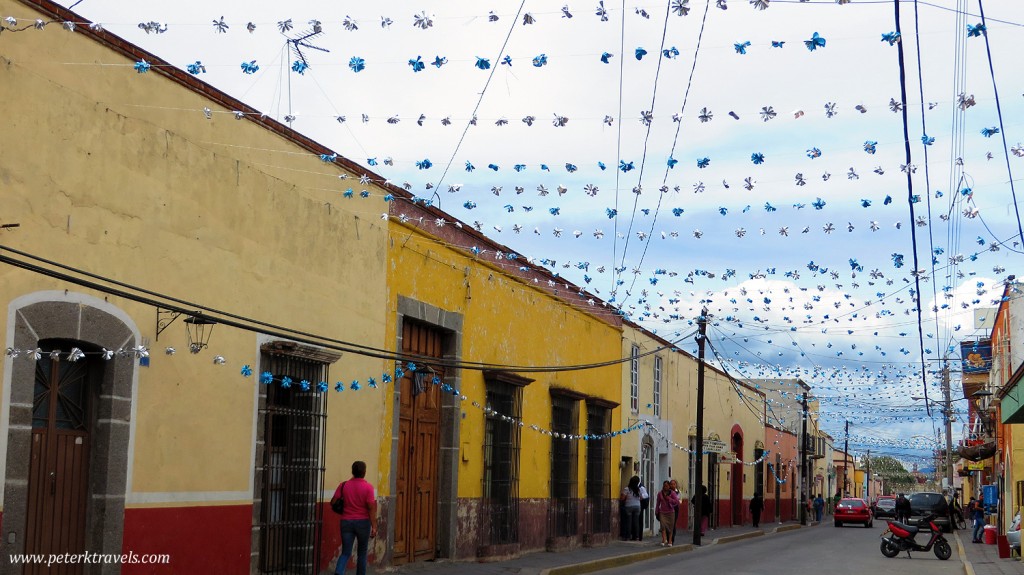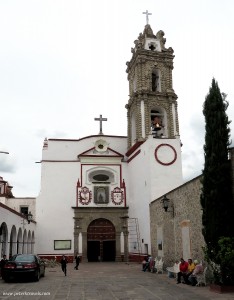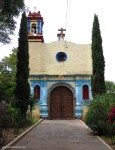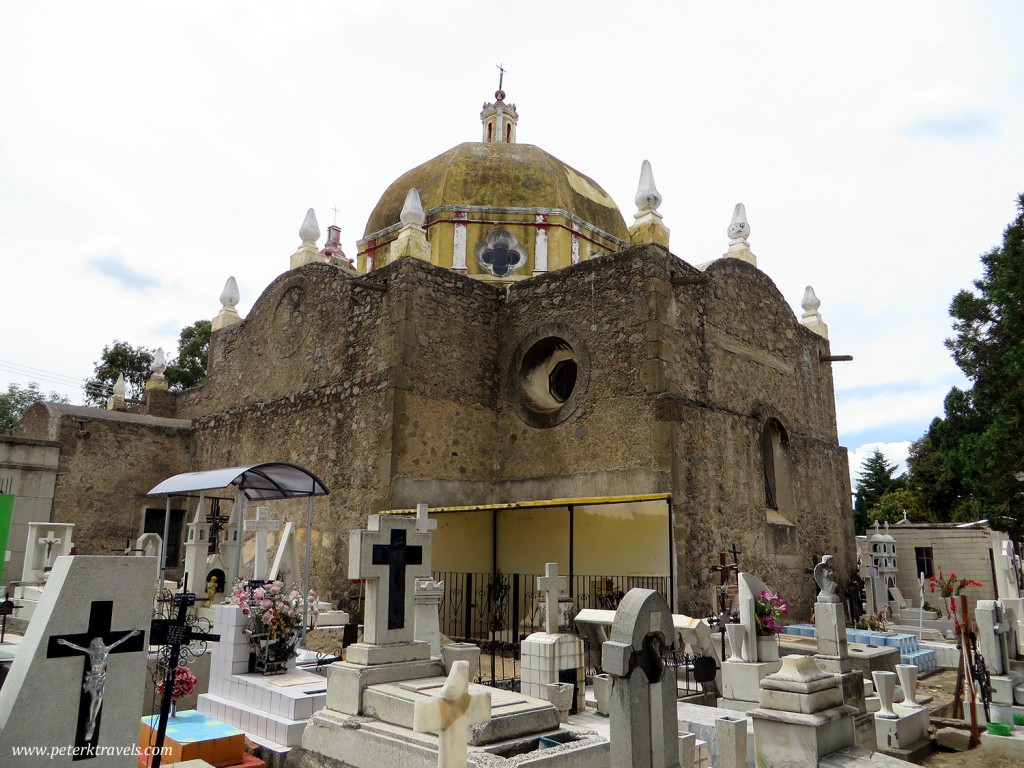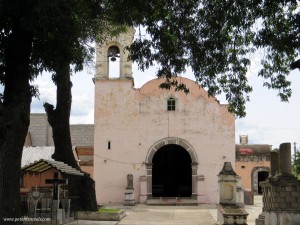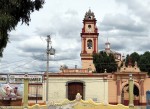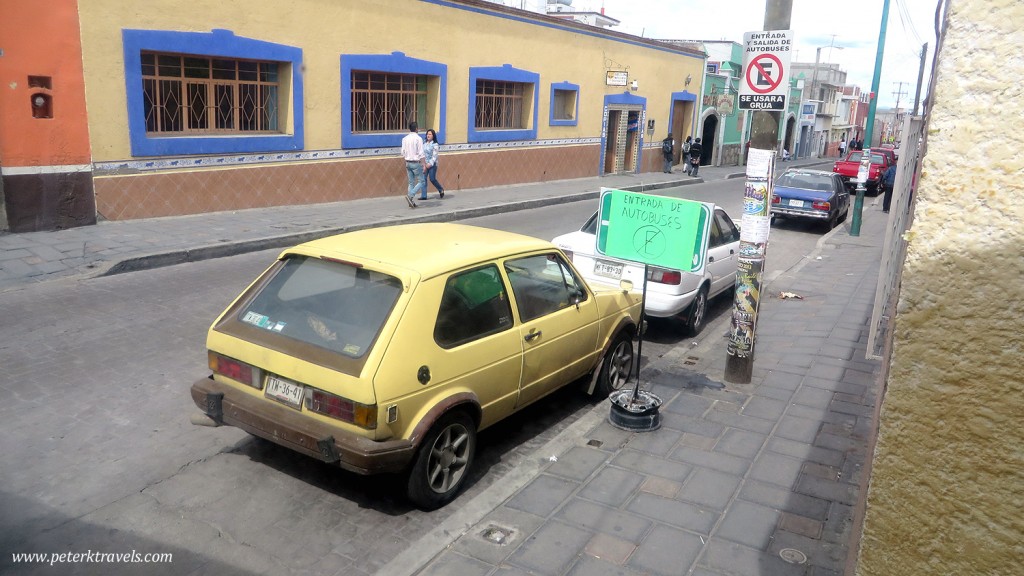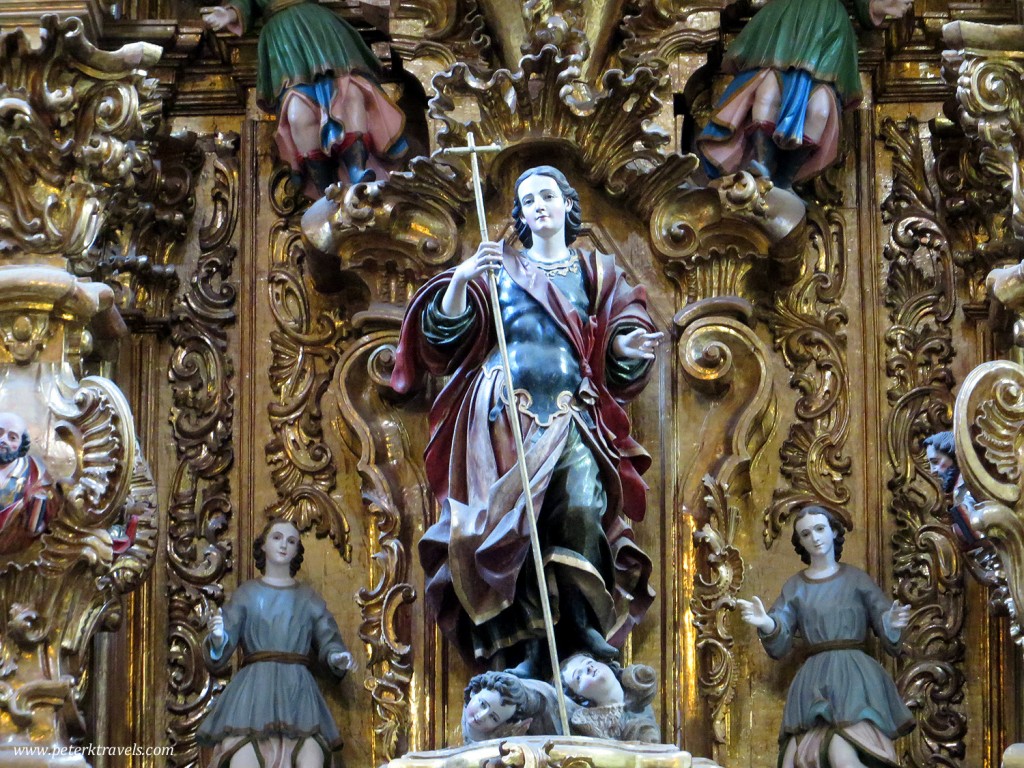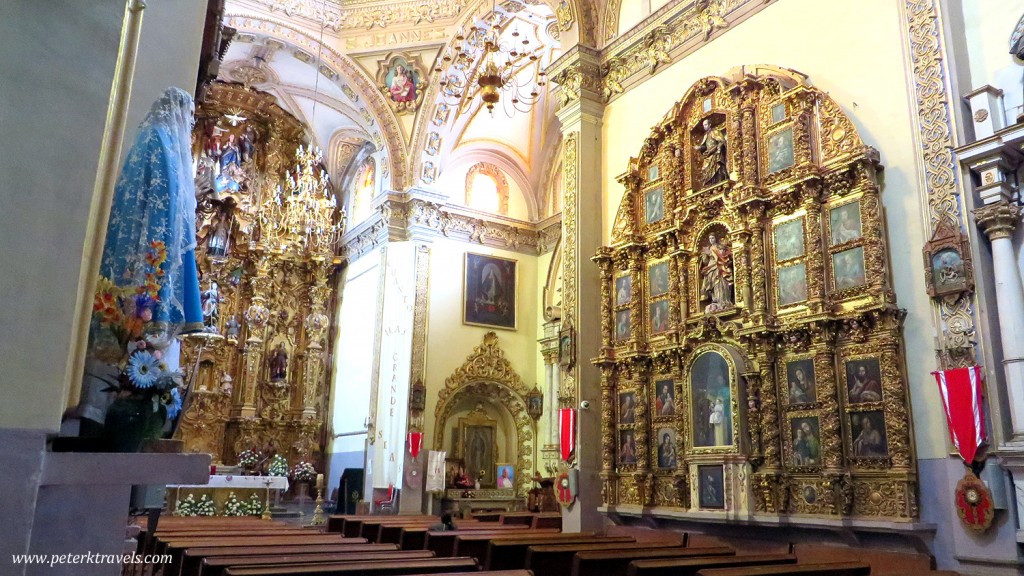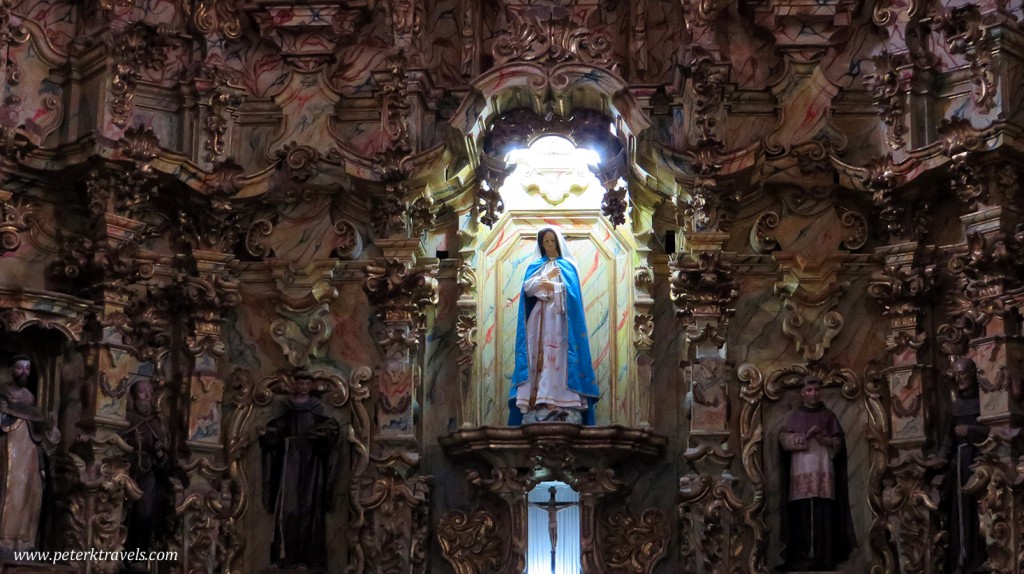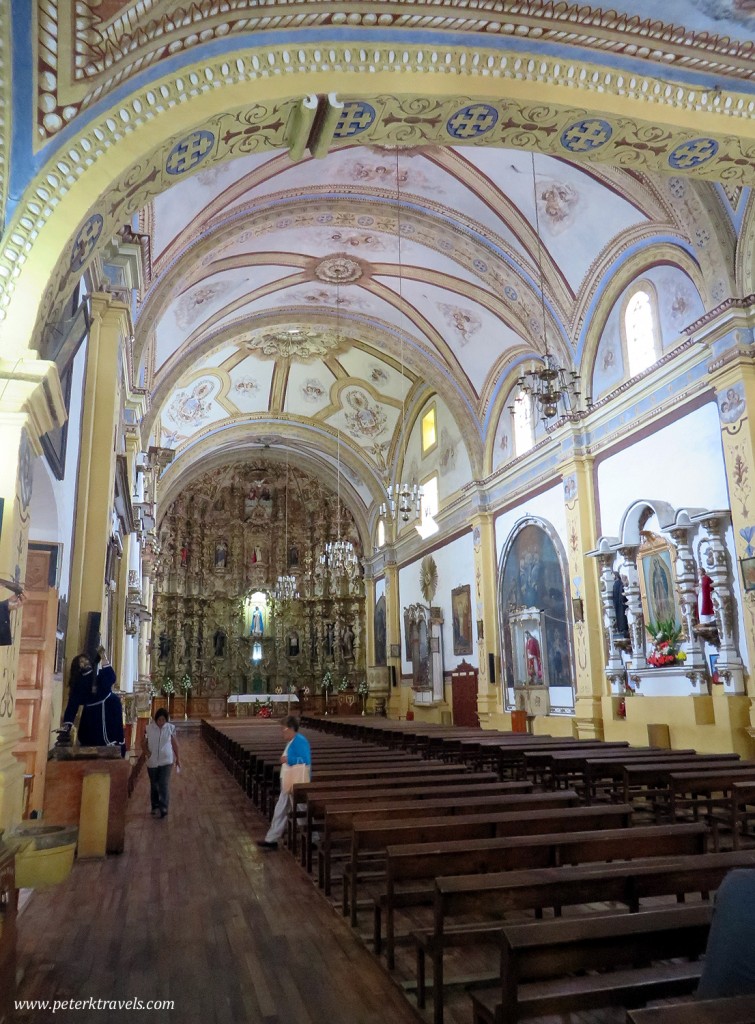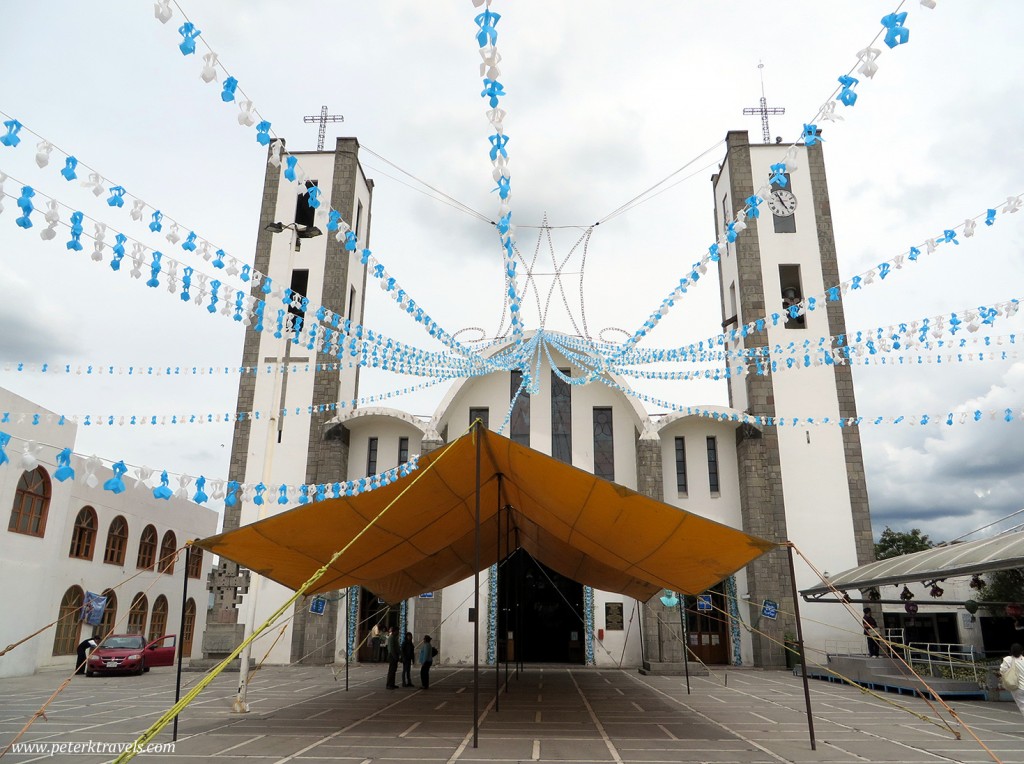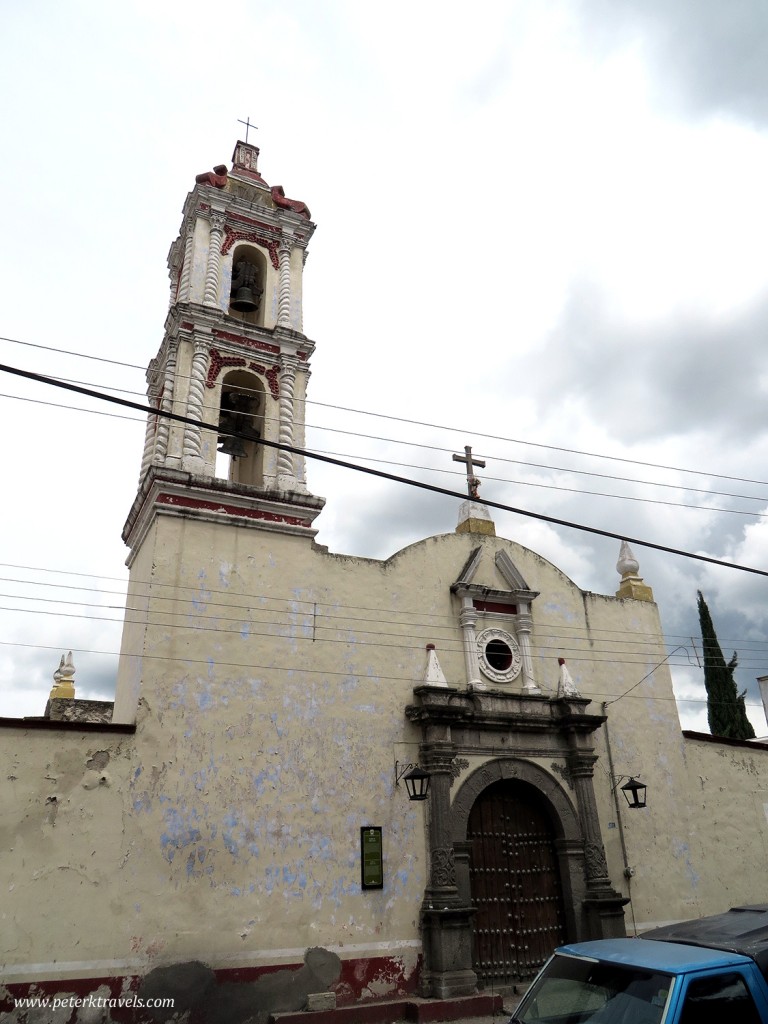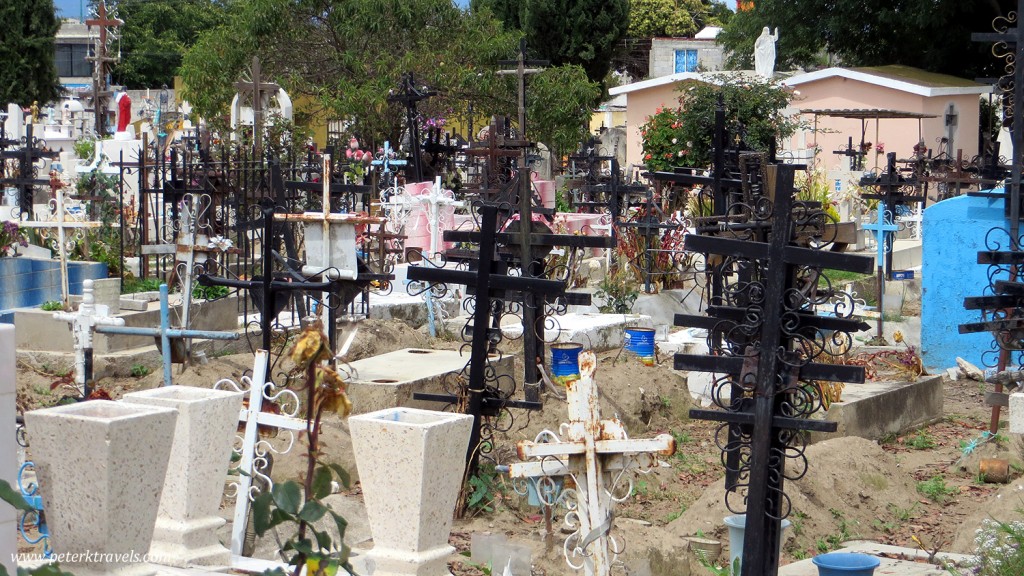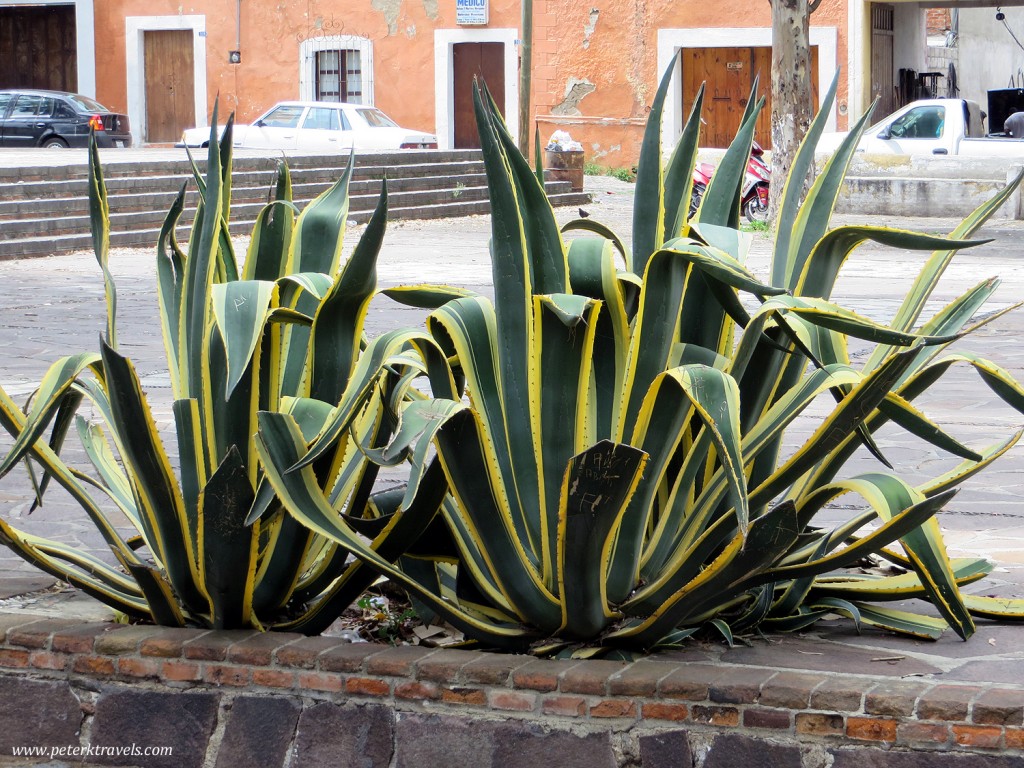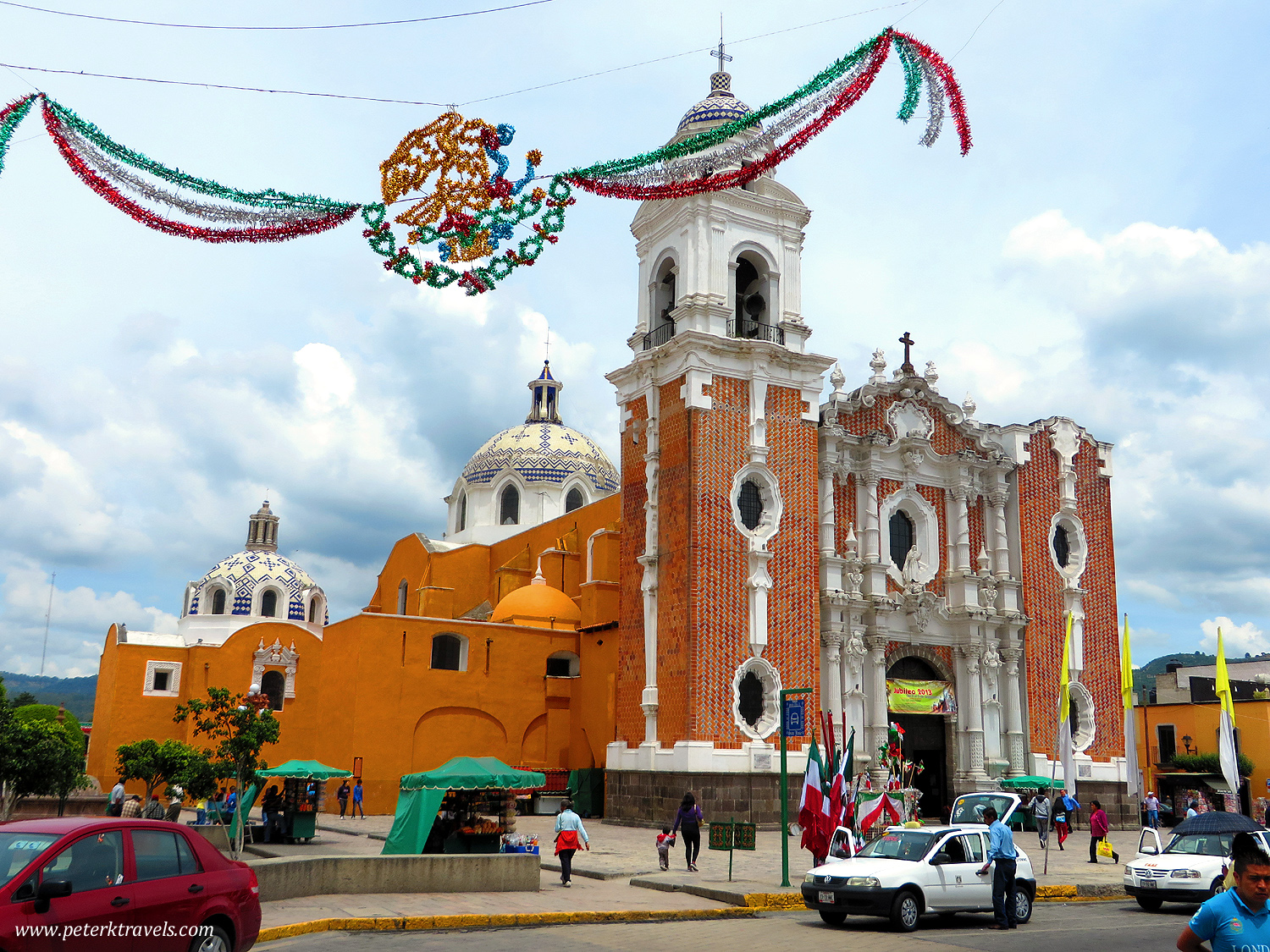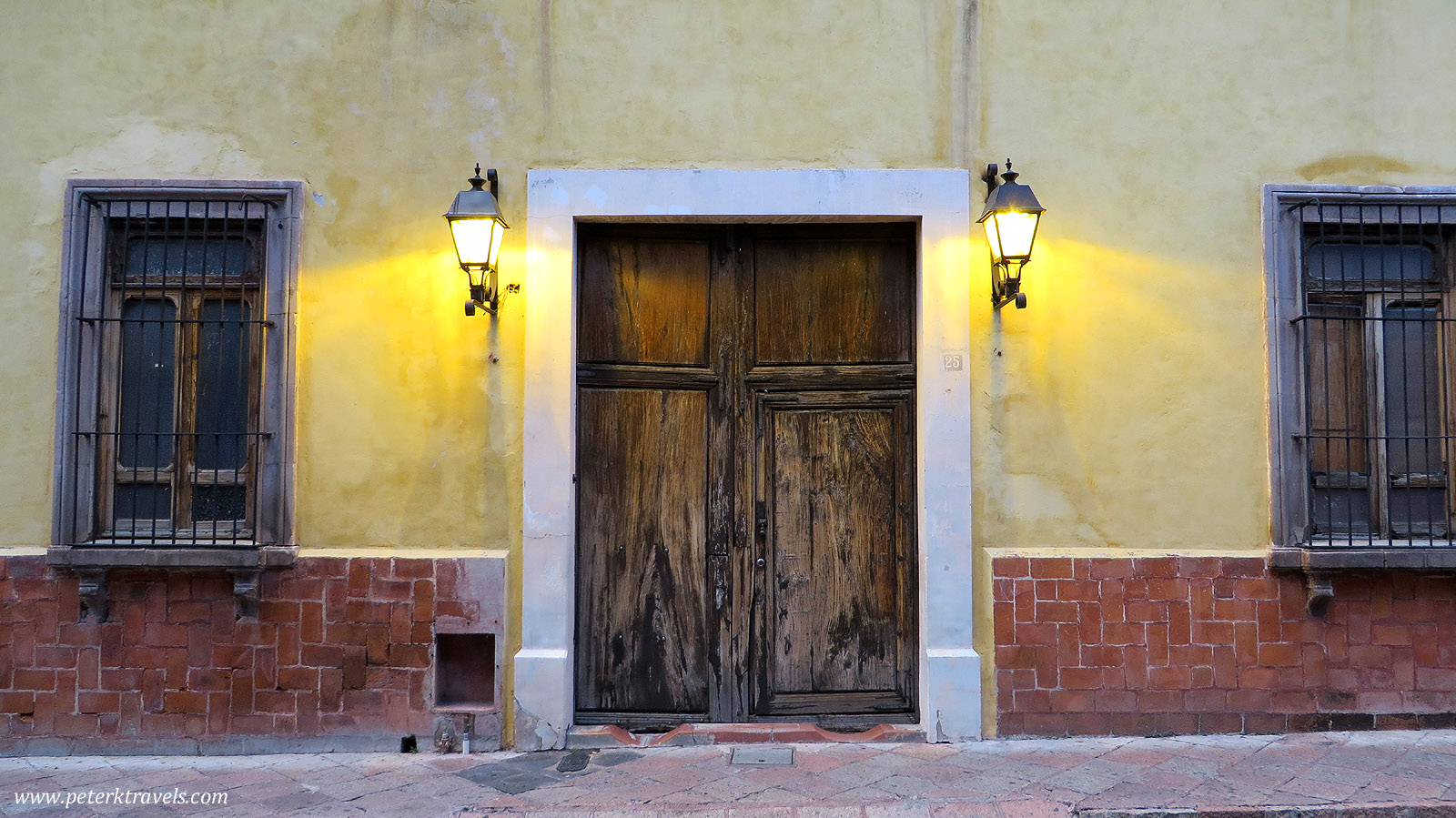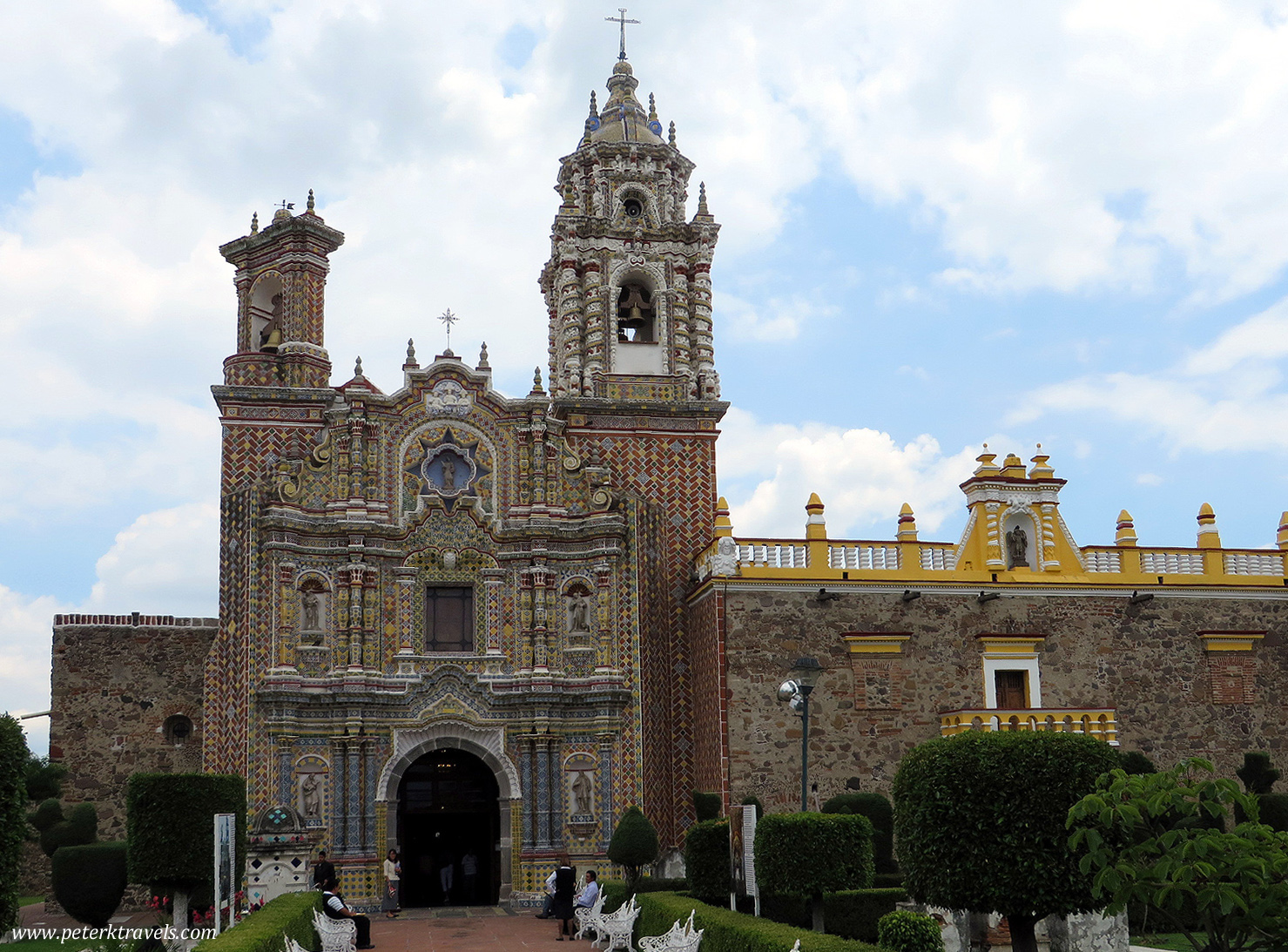A Few Hours in Huamantla
During my September 2013 trip to Puebla, Mexico, I took a day and detoured to the state of Tlaxcala. While there, I visited the city of Huamantla. Huamantla is one of Mexico’s “Pueblos Magicos”, cities or towns promoted by Mexico’s Secretariat of Tourism for having special historic or cultural significance.
Huamantla played a part in American history. Huamantla was the site of a victory by American forces during the Mexican-American war in the 1840s. The city was pillaged and burned by the American troops.
I arrived in Huamantla on an ATAH bus from Tlaxcala. It was abour an hour ride, and cost only $25 pesos (about $2 US). It wasn’t entirely clear where the bus driver intended to stop, and the Lonely Planet guide mentioned that sometimes the buses bypass the downtown altogether. When it looked like we were near downtown, I jumped off the bus. I asked a policeman directions to the Zocalo (main square), and I was only a few blocks away.
Like most Mexican cities, Huamantla has a central Zocalo which is the center of the civic area. Per normal, there was a government building and a large church. Huamantla had several nice churches of some significance. I had created a map of them ahead of time, and decided to walk to them in a bit of a self-guided tour.
The Parroquia de San Luis Obispo dates to 1641, and has an interesting dark quarry stone facade. The facade is broken into columns, and has white alabaster figures in niches to give contrast. The towers are painted white, and the walls yellow. Red is used on the domes. It is an attractive church. The interior features ten gilded altars, as well as many sculptures and paintings. This particular church is the most important to the people of Huamantla.
Nearby, on the other side of the square, is the Convent of San Luis Obispo. This Franciscan Convent dates to 1585, and has a rather simple facade. The interior is quite spectacular. See the photos below.
Walking north on Avenue Juarez, after a block or two we pass yet another church. This one is more modern in appearance, and is the Basilica de la Caridad. The style was not of interest to me, and I did not enter.
Walking north on Juarez was quite pleasant, as the street was covered above by decorations. Huamantla is famous for its August puppetry festival (it is also home to the National Puppet Museum), and its elaborate Easter celebrations, where colored sawdust is made into street art.
Avenue Juarez dead-ends into the next church on our tour, the Temple of the Cavalry. The temple dates to the end of the 17th century, and is the burial place of many who died during the American (1847) and French (1862) incursions into Mexico. Regrettably, the gate was locked and I was only able to shoot a few photos of the exterior. It is a very attractive in its simplicity.
Heading back south and east, we come to the Templo de Nuestro Padre Jesus (Temple of Father Jesus). The building dates to the end of the 17th century, and is currently needing a coat of paint. It has a rather plain facade, with the wooden doors surrounded by carved columns. The temple was not open, so the interior remains a mystery. This temple sits on the edge of the cemetery, which I decided to take a quick walk through.
After a quick visit in the cemetery (it did not seem that a camera wielding tourist was most welcome), I walked due west a few blocks, to the Templo del Dulce Nombre (Temple of the Sweet Name of Jesus).
Dating from the early 18th century, it has a simple facade and a single tower. The plaza in front contains several graves (I better steer clear!), but while the Temple doors were open, the plaza gate was locked. I was reduced to taking several photos through the bars.
Across the street was a building that appeared to be an early hospital (Hospital Juarez) with attached temple. I pushed in the gate to peek inside, but the building now serves as a primary school, and I didn’t feel it appropriate to go any further. I did take several photos of the exterior.
By this point, I was pretty beat, and decided it was time to think about heading back. I suspect I missed several churches, but having found no others on the map, I felt pretty good about my visit. As I had jumped off the bus before it reached its final destination, the location of the bus station was a mystery. In situations such as these, asking a cab driver (or simply taking a cab) is usually the best method.
I walked back to the Zocalo and asked a cab driver to take me to the central camionera (central bus station). After getting in, he asked where I was going. I answered Puebla, and he nicely dropped me at the station that had a direct bus to Puebla, therefore not having to re-trace my steps back through Tlaxcala. He even went in and told the bus station employee to sell me the ticket for the toll highway, not the slow route. Only 30 pesos — thanks! This was an Oro bus, and the station was located just a few blocks off the Zocalo (so it wasn’t much of cab ride — oh well). The bus was delayed in leaving due to a car which had been parked in such a way that the bus couldn’t pull out — we had to wait for the driver to hunt down the owner and get him to move the car!
I generally enjoyed my few hours in Huamantla. While it is a Pueblo Magico, I didn’t think it rated quite as highly as some of the other Pueblos Magicos I have visited. It didn’t have the friendly, open vibe of a place like Jerez, Zacatecas. Having said that, it was still worth the time to check out, and I did enjoy the sights I saw. I asked the cab driver if they had many tourists visit Huamantla, and based on his response it seems that most are Mexican nationals who come during the festival time. In addition to the churches, there are other attractions here, including the aforementioned National Puppet Museum. There’s also a large castle-like structure called the Hacienda Soltepec outside of town, which might have made for a nice photo. I caught a glimpse of it from the bus as we rolled by.
Please click any photo for a larger version.

